Guides de soupapes + Sièges de soupapes
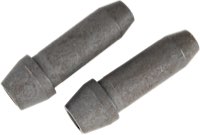
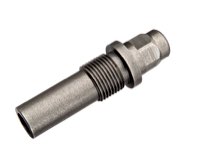
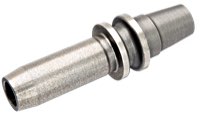
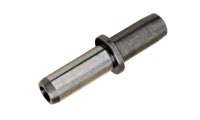
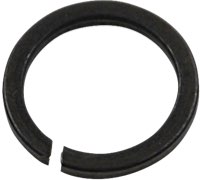
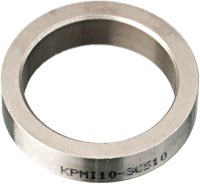
Le rôle de guidage pour la tige de soupape : guides de soupape
Les guides de soupape ont l'air insignifiants, mais ils ont une fonction importante. Si la soupape n'est pas parfaitement guidée, elle ne peut pas s'ouvrir correctement et elle n'assure pas non plus l'étanchéité sur son siège. Or, ces deux éléments sont importants si l'on veut que le moteur produise sa puissance optimale. De plus, les guides de soupape et les sièges de soupape doivent évacuer la chaleur de la soupape elle-même et la transmettre au matériau du cylindre ou de la culasse.
À quelle fréquence faut-il changer les guides de soupape ?
Sous réserve d'une bonne lubrification, les guides de soupapes peuvent durer toute la vie d'un moteur OHV. A condition que l'alimentation en huile de la culasse soit correcte. Le joint de la tige de soupape doit seulement empêcher une trop grande quantité d'huile sur la tige de soupape. Un excès d'huile dans le guide de soupape ne se contente pas de pénétrer dans la chambre de combustion et de faire passer les gaz d'échappement du bleu au blanc en passant par le gris, il s'incruste aussi dans le guide de soupape d'échappement et réduit la durée de vie du guide et de la tige de soupape.
Sur les moteurs à soupapes latérales et les modèles semi-culbutés, les guides de soupapes ont une vie bien plus difficile, raison pour laquelle il faut changer au moins le guide de soupape d'échappement après environ 25 000 km. Surtout si le motard a toujours roulé vite. Sur ces modèles, la lubrification des soupapes et des guides n'est assurée que par le brouillard d'huile qui passe devant les poussoirs et sous le cache des ressorts de soupape. Le guide de soupape d'admission des modèles semi-culbutés est une véritable pièce d'usure. Sa vie est en grande partie déterminée par la burette d'huile que le conducteur doit avoir avec lui lors des longs trajets.
Comment installe-t-on les guides de soupape ?
Il existe des personnes brutales qui font sortir le guide de son logement à coups de marteau et qui mettent ensuite le nouveau guide à sa place avec autant de force.
La bonne façon de procéder est différente : le guide de soupape est placé sous un siège à pression dans l'alésage du cylindre ou de la culasse. C'est pourquoi il faut d'abord chauffer le cylindre ou la culasse avant de retirer l'ancien guide. C'est la meilleure façon d'éviter d'endommager le matériel. De même, les cylindres et les culasses sont chauffés avant d'être mis en place et les guides sont refroidis avant d'être insérés exactement coaxialement avec le siège de soupape à l'aide d'un outil spécial. Cette méthode garantit que les guides ne se détachent pas, même dans des conditions thermiques difficiles.
À quoi faut-il faire attention avec les bagues de siège de soupape ?
Même s'ils sont discrets, les sièges de soupape sont des pièces d'usure : à 2.500 tr/min, la tête de soupape frappe déjà 1.125 fois par minute sur le siège de soupape. Lorsque l'on démonte une soupape, on examine également le siège de soupape. L'étanchéité de la tête de soupape dépend de la géométrie du siège de soupape. Et si celui-ci est usé, les soupapes ne s'ouvrent plus correctement. Au plus tard lorsque le jeu des soupapes se règle comme par magie toutes les quelques centaines de kilomètres, les sièges de soupape doivent être contrôlés d'urgence. En règle générale, ils sont alors déjà desserrés lorsque le moteur est chaud.
Les travaux sur les guides de soupapes et les sièges de soupapes sont dans tous les cas une affaire de spécialiste, surtout si l'on ne dispose pas des outils nécessaires. Adressez-vous au réparateur de moteurs de votre choix.

Vous avez des questions?
Service téléphonique Lundi - Vendredi 08:30 - 12:30 / 13:00 - 15:00 Tel.: +33 4 68 08 27 77, eMail: service@wwag.com